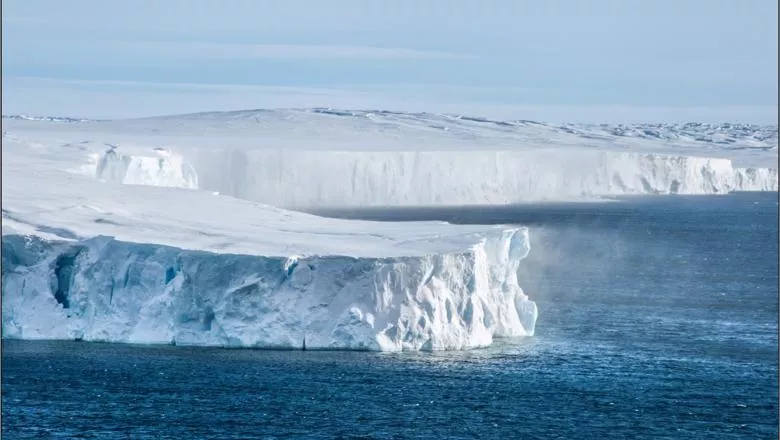There's been huge progress over the past decade in understanding uncertainties about Antarctica's future. Most studies predict a relatively small contribution from East Antarctica this century, and all show that limiting global warming to well below 2°C would keep this to less than a half a metre. But if we keep on increasing our emissions, we can't rule out contributions to sea level that are many times higher.
Dr Tamsin Edwards, co-author and Reader in Climate Change
10 August 2022
Fate of the world's biggest ice sheet is in our hands, scientists say
If the target of the Paris Agreement is met, we can prevent substantial sea-level contributions from a melting East Antarctic Ice Sheet and reduce the threat to millions of people and species inhabiting coastal areas.

In a new study, published in Nature, researchers show that the worst effects of global warming on the East Antarctic Ice Sheet (EAIS) could be avoided if temperatures do not rise by more than 2°C above pre-industrial levels.
Staying below this limit would see the EAIS – which holds the vast majority of Earth’s glacier ice – contribute less than half a metre to sea-level rise by the year 2500, the researchers say.
However, they add that any increase above 2°C could potentially see the EAIS contribute several metres to sea-level rise in just a few centuries.
To assess the sensitivity of the EAIS, the researchers looked at how the ice sheet has responded to past warm periods, as well as examining where changes are currently occurring.
They then analysed a number of projections made by previous studies to examine the effects of different emission levels and temperatures on the ice sheet by the years 2100, 2300 and 2500.
Dr Tamsin Edwards, from the Department of Geography, led the analysis of future sea-level projections.

The study shows that if warming continues beyond 2100, sustained by high emissions, then East Antarctica could add several metres to global sea-level rise over the coming centuries. This would add to the substantial contributions from Greenland and West Antarctica and threaten millions of people worldwide who live in coastal areas.
Crucially, if the target of the Paris Agreement is met, significant ice loss from East Antarctica could be reduced or even prevented, with the EAIS’s contribution to sea-level rise remaining below half a metre by 2500.
The study was led by Durham University working with King’s College London, and Imperial College, London (UK); the Australian National University, University of New South Wales, University of Tasmania and Monash University (Australia); Université Grenoble Alpes (France); the University of Colorado Boulder, NASA Goddard Space Flight Center and Columbia University (USA).

